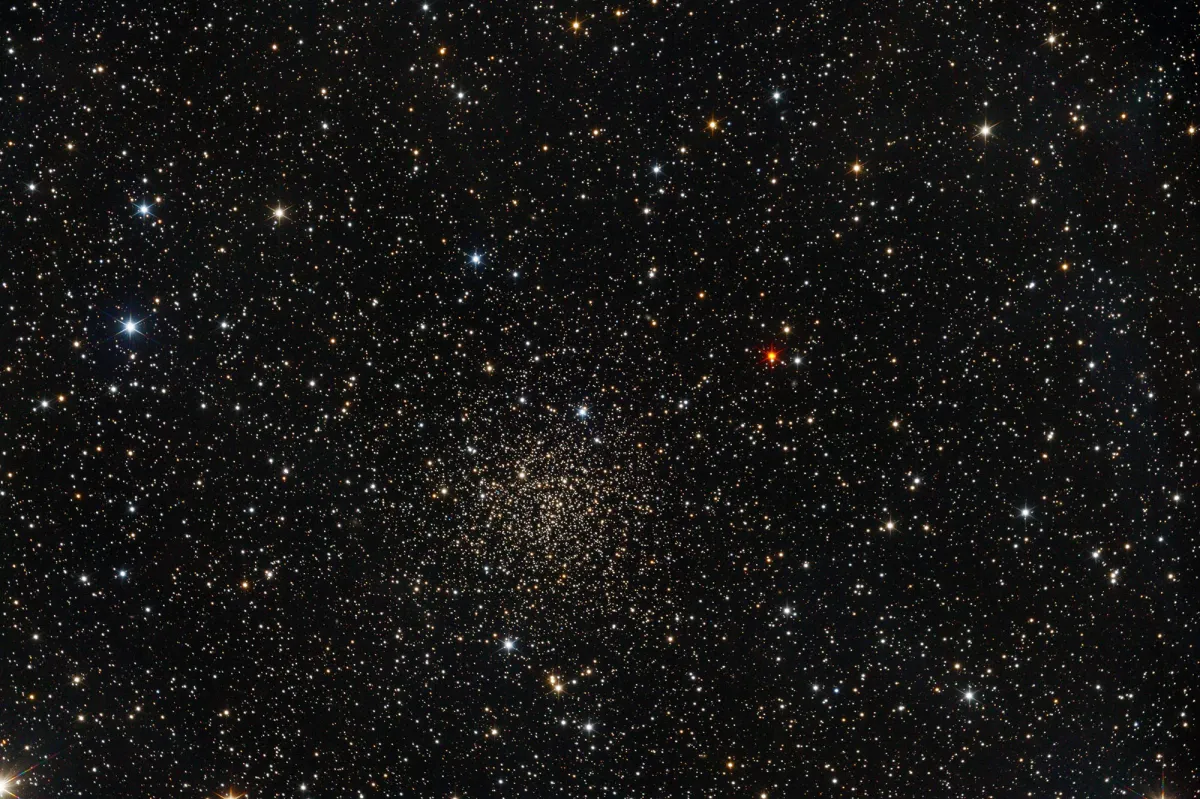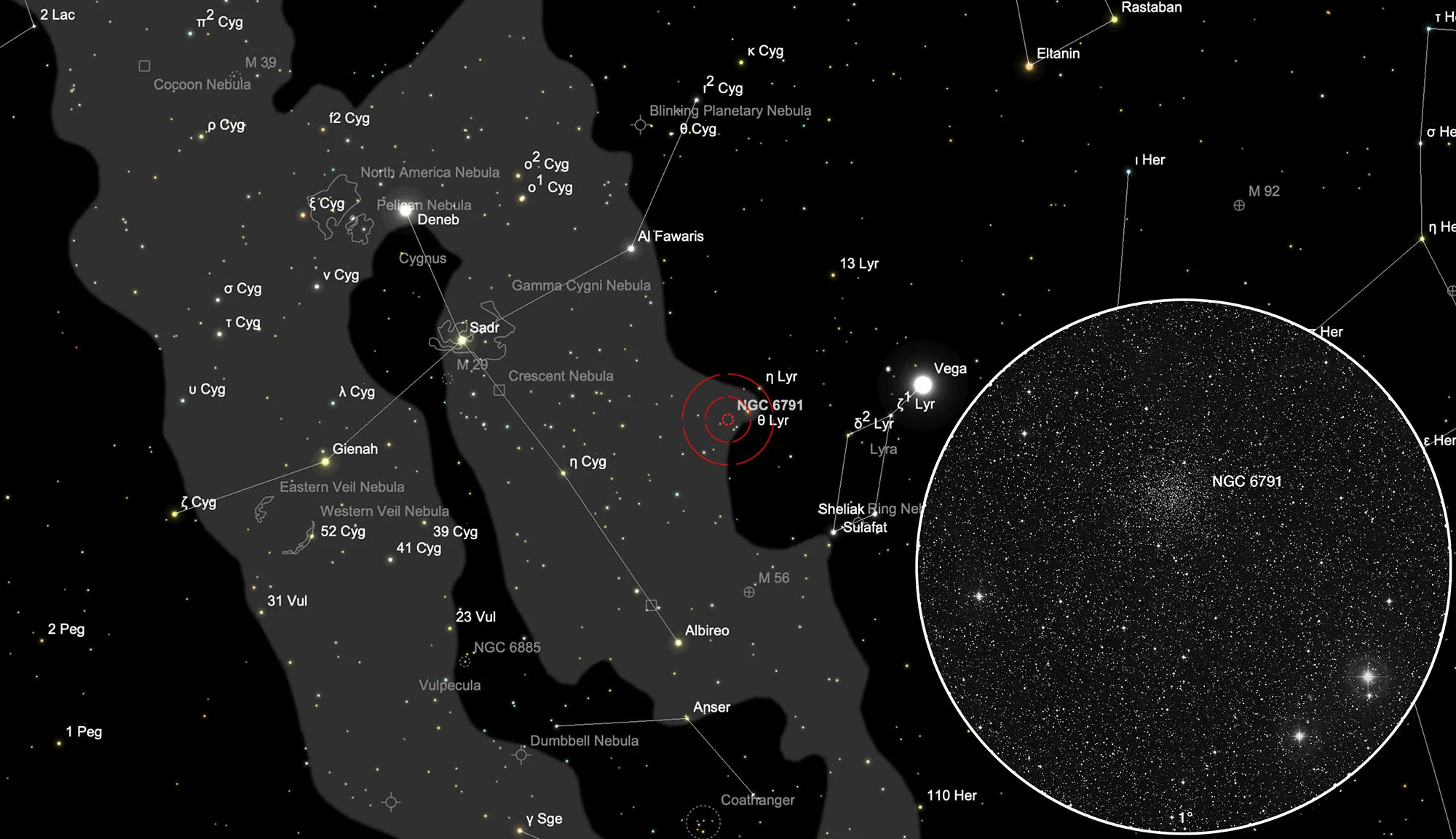Open Cluster NGC 6791


Object Description
There are only a few bright deep sky objects in the Lyra constellation. Among the few is the open star cluster NGC 6791 at the eastern constellation border. Its distance is given as about 17'000 light years. The age is about 7.1 billion years, which makes NGC 6791 one of the older clusters. The oldest known star cluster is NGC 188 with about 11 billion years. Observational data on this cluster is quite sparse - Burnham is limited to a mirror image, the NGC only has the tenuous «vF». In more detail, the «Saguaro Astronomy Club» writes in its V6.0 database: «! vF, L vRi, *F», with which he is quite right - see below.
| Designation | NGC 6791 |
| Type | OCL (II3r) |
| Right Ascension (J2000.0) | 19h 20m 52.7s |
| Declination (J2000.0) | +37° 46' 27" |
| Diameter | 10 arcmin |
| Visual magnitude | 9.5 mag |
| Metric Distance | 4.100 kpc |
| Dreyer Description | vF (Auw 45) |
| Identification, Remarks | GC 4492; OCL 142 |
Finder Chart
The open star cluster NGC 6791 lies 9 degrees east of Vega in the constellation Lyra. It is easier to find if you swing from the 4.4 mag bright star θ Lyrae one degree towards east. However, note the brightness and size of the cluster and choose the magnification on the telescope accordingly so that the sky background is already quite dark. On 11 July the cluster is in opposition to the Sun and crosses the meridian at local midnight.
Visual Observation
200 mm aperture: One sees a few moderately bright stars in front of a large, round, faintly luminous area. These stars are probably foreground stars and therefore not part of the cluster. Up to about 100x magnification, this area appears foggy to granular - depending on the atmospheric transparency. It's not resolved properly. The cluster is strongly reminiscent of the globular cluster NGC 5053 in terms of stellar density and brightness.
450 mm aperture: With a large aperture, it is fairly easy to miss the open star cluster. Here it is necessary to reduce the magnification a little. You can see the cluster very nicely broken up into many faint individual stars.
